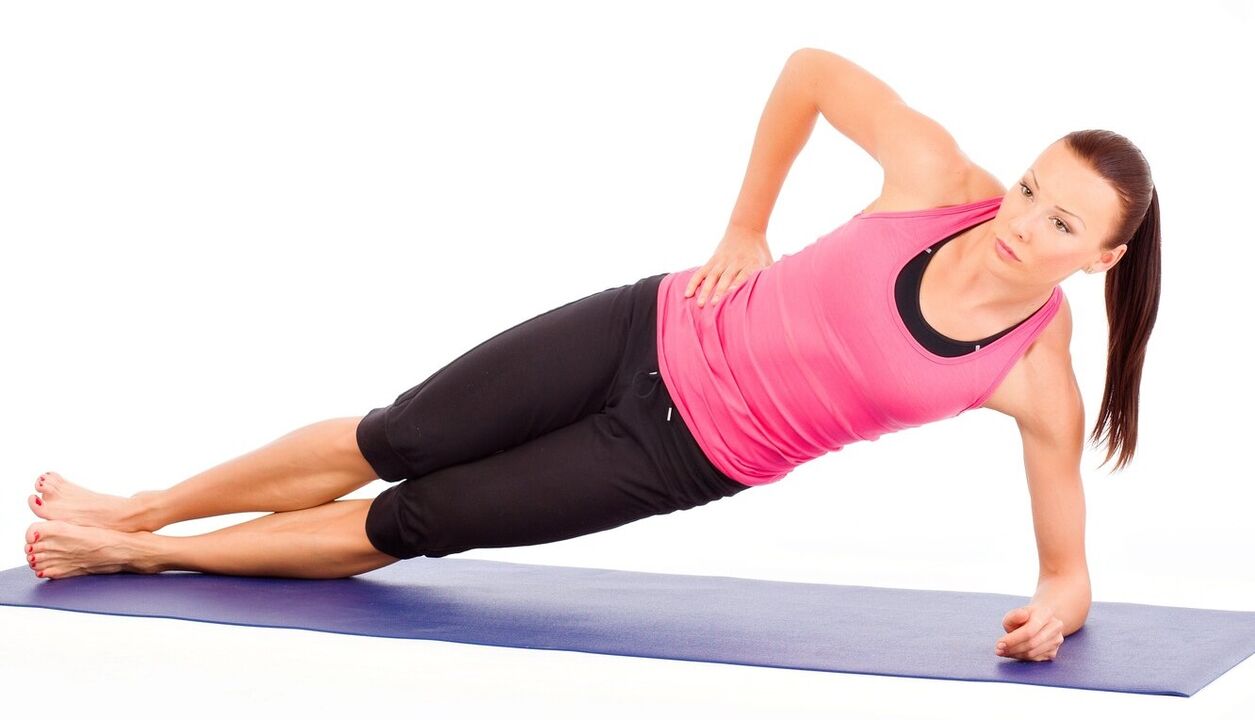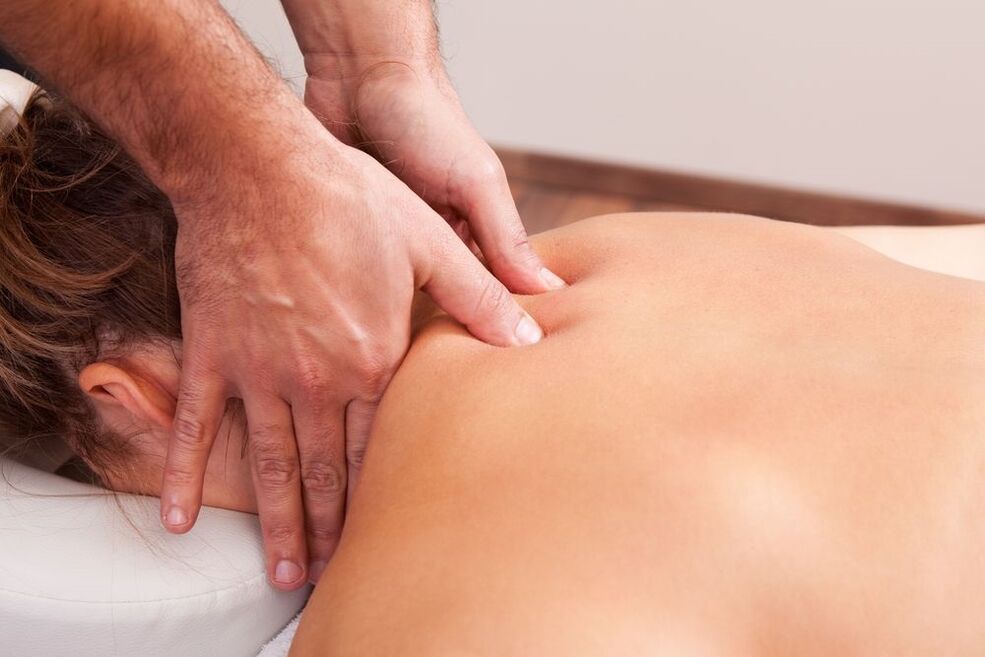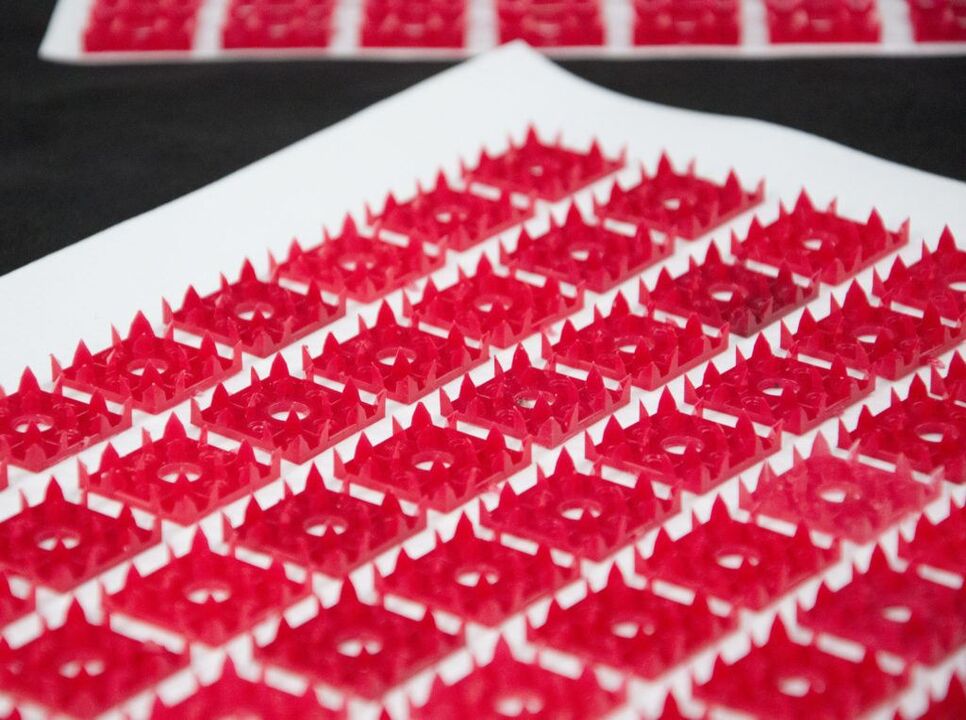
Cervical osteochondrosis is a dystrophic change of cervical intervertebral discs.
Not only the intervertebral disc itself is negatively affected, but the vertebrae, soft tissue and cartilage tissue are also negatively affected. The main feature of the cervical spine area is that its vertebrae do not have the most reliable structure compared to other areas, which makes this area very fragile. The vertebrae are close to each other and also close to the arteries that supply blood to the human brain.
If the vertebrae are displaced, the nerve bundles and arteries are likely to be compressed, which will inevitably lead to hernias between the vertebrae and protrusions, that is, changes in the structure of the intervertebral disc.
what is this?
Cervical osteochondrosis (Osteohondroz) is a degenerative dystrophy of the intervertebral disc, which leads to damage to the intervertebral disc itself, vertebrae and cervical joints, and a decrease in the height of the intervertebral disc is observed. If not treated in time, the disease will progress and may cause headaches and blood. Poor circulation or even hernia. Like osteoporosis, this disease occurs due to a disorder of mineral metabolism, which leads to weakening of bones and joints.
Why does osteochondrosis occur?
Although traditional medicine considers the degenerative changes of the cervical intervertebral disc to be a disease, from the perspective of osteopathy, it is only a manifestation of a deeper disease in the body.
Therefore, the real cause of cervical osteochondrosis is:
- Muscle cramps. . . the spasm response of the back, chest, and pressed muscles can cause some parts of the body to be very tense. As a result, the general balance position of the body is disrupted, leading to changes in the position of the spine. The deformity can touch the cervical spine area or other parts of the spine, leading to osteochondrosis in the thoracic, cervical and lumbar spine areas.
- Bad posture. . . Scoliosis, bending, round back, kyphosis and other postural disorders, even minor, can cause severe spinal imbalance. As a result, the load on the intervertebral disc is unevenly distributed, leading to increased deformation and wear. The vertebrae begin to converge, causing the invasion of neurites, and cervical osteochondrosis develops quite quickly. Postural disturbances caused by changes in the natural position of the ribs have similar consequences.
- Innervation disorder. . . The decrease in nerve root sensitivity leads to pathological changes in its structure, so patients will not notice the displacement and deformation of the cervical spine. After all, pain is non-existent due to sensitivity disorders.
- Visceral disease. . . the position of the internal organs is incorrect, and various dysfunctions cause them to shift and lower, thereby disrupting the overall balance of the body. As a result, this will seriously affect the position of the spine-cervical and lumbar spine displacement and deformation, leading to corresponding types of osteochondrosis.
- Violation of blood supply. . . Since the intervertebral discs are not directly connected to the circulatory system, they obtain nutrients from the surrounding tissues. The interruption of the blood supply to the cervical spine will result in the intervertebral disc not having enough fluid for rehydration (recovering its shape due to moisture absorption) and the renewal of cartilage tissue. As a result, their wear accelerates and the distance between the cervical vertebrae decreases, leading to osteochondrosis.
stage
The attending physician should determine the degree of development of cervical osteochondrosis based on the medical history and the patient’s examination. There are only four degrees:
- First level. . . The disease is in its infancy, and the patient has slight pain in the neck. If the person starts to turn his head, the pain will be more severe.
- Second degree. . . The patient may complain of very severe pain in the cervical spine, which may be in the upper limbs. The clinical pictures show that at this stage of the disease, the nerve bundles are observed to be compressed, causing severe pain. Headaches, weakness and general malaise were also noted.
- Three degrees. . . The pain is almost endless, and it radiates to the shoulders or arms. Some patients are diagnosed with a herniated disc, leading to loss of sensation in the upper limbs. After a doctor's examination, the cervical spine's range of motion was significantly decreased, and the palpation was painful.
- Fourth degree. . . At this stage of the disease, the intervertebral disc is almost completely destroyed. It is replaced by connective tissue, which makes the patient's condition worse. He started to feel more pain, noise in his head, and poor spatial positioning. This indicates that the arteries are squeezed and interfere with the natural nutrition of the brain.
First sign
How does cervical osteochondrosis manifest:
- Nerve root syndrome-in the context of compression of nerve endings, pain will occur, spreading from the neck to the shoulder blades, forearms, and covering the front wall of the chest;
- The arm muscles are weak, and the neck is obviously swollen;
- When you move your head, you will hear a unique crunching sound;
- Weakness, chronic fatigue, drop in blood pressure;
- Lack of coordination, often dizzy, accompanied by nausea and vomiting during attacks;
- Vision and hearing loss, noise, tinnitus;
- Numbness in limbs, tongue;
- Frequent migraines;
- Women aged 45-65 may experience upper limb pain, numbness, and tingling during sleep, which can be repeated several times a night.
Symptoms of cervical osteochondrosis
The important symptoms of cervical osteochondrosis are dizziness, headache, and elevated blood pressure.
Diagnosis of the disease is difficult, sometimes there is no pain, the symptoms disappear, and the uncontrolled use of strong analgesics masks the signs of the disease. Patients who do not feel pain think that they are healthy, and this situation continues until an irreversible process appears in the joint tissue of the neck.
Cervical osteochondrosis headache
The most common causes of headaches in the pathology we describe:
- Cerebral vasospasm;
- Pinch the nerve root;
- Intracranial pressure increased reflexively.
The pain may be paroxysmal, persistent, throbbing, and dull.
Cervical osteochondrosis dizziness
Dizziness can be caused by:
- Inflammation of the middle or inner ear;
- Cerebral vasospasm;
- The transmission of nerve impulses is disturbed;
- Vestibular organ problems;
- Cardiovascular diseases.
There is no clear standard for dizziness in osteochondrosis. However, there are systemic and non-systemic vertigo, and there is a clear difference between them.
It is recommended to understand the difference between systemic and non-systemic vertigo, which will help to independently determine the cause of the abnormal state:
- Generalized dizziness is the sensation of circular motion of surrounding objects or body, which is the result of interruption of vestibular organs, visual analyzers and joints, muscles and epidermal receptors (osteochondrosis of various etiologies);
- Non-general dizziness is a feeling of dizziness, a feeling of being stunned, not sure if you are in an upright position. In the case of non-general dizziness, there is no feeling of rotation, which is an important difference between comparing signs.
People who feel dizzy should be checked by an experienced doctor, first by a neurologist or (if otolaryngology disease is suspected) by an otolaryngologist.
The reason for the emergency hospitalization has nothing to do with cervical osteochondrosis, because the patient (except dizziness) has the following symptoms:
- Facial muscle numbness and numbness of part of the shoulder girdle;
- Severe headaches in the context of deteriorating health;
- Impaired motor coordination;
- Loss of consciousness or extinction.
Blood pressure of cervical osteochondrosis
The link between cervical osteochondrosis and elevated blood pressure has long been established. The cervical spine has important nerve endings and blood vessels.
A distinctive feature of cervical osteochondrosis hypertension is the combination of the following symptoms:
- Headache;
- Pain in limbs and chest;
- Decreased neck sensitivity;
- Stress surges after stress, muscle tension, uncomfortable postures for a long time, and other similar situations.
These signs should be taken into consideration when self-diagnosing hypertension from various sources.
A sharp rise in blood pressure and rapid deterioration in health are the basis for seeking emergency medical help.
Osteochondrosis syndrome
Osteochondrosis includes the following syndromes:
- Spine. . . It is also called the vertebral body, which indicates that bone and cartilage tissue are involved in the pathological process. This leads to the following symptoms: restricted movement of the neck, pain during rotation, and radiological changes in the cervical spine image. The simultaneous appearance of these symptoms is vertebral body syndrome. A similar set of clinical symptoms is observed in myositis (muscle histopathology), and painful movement is an accompanying symptom of many other pathologies.
- Heart syndrome. . . It manifests as a burning sensation in the chest and shortness of breath. The person feels his or her heart beating faster and becomes tired and irritable. This picture is also a typical heart pathology, such as angina pectoris, coronary artery syndrome, heart attack. After the patient's ECG examination, accurate conclusions can be made about the causes of these symptoms.
- Nerve root syndrome. . . The cervical spine area innervates 8 pairs of nerves, each of which has a root—the place where the nerve comes out of the vertebrae. When they involve osteochondrosis, the patient will feel reduced sensitivity, and vice versa-severe pain. It may be numbness in the posterior occiput, whether it is painful, decreased tongue sensitivity, and pain in the supraclavicular area behind the ears. Sometimes there are swallowing violations, upper extremity belt movement, and finger numbness.
diagnosis
If there are obvious signs of cervical osteochondrosis on the face, then the doctor will prescribe some methods to ensure that the diagnosis is correct:
- X-rays of the cervical spine. This method is desirable in the early stages of the disease, but may not be useful in the late forms.
- CT (Computed Tomography). It allows you to see structural changes in the vertebrae, but with this method it is impossible to determine the size of the hernia between the vertebrae.
- Nuclear magnetic resonance. It is considered to be the most effective diagnostic method to determine cervical osteochondrosis. The size of hernias between the intervertebral discs can be determined, as well as their degree of development.
- Your doctor may also order a double scan to determine if your arteries are not working properly.
Complications of the disease
What are the hazards of cervical osteochondrosis:
- Frequent migraine attacks;
- Heart rhythm disturbance, atherosclerosis;
- Herniation, intervertebral hernia, vertebral bone hyperplasia;
- Severe brain disease;
- The lumen of the vertebral artery becomes narrow, leading to the development of VSD, cerebral hypertension, and disability;
- Spine stroke.
Home first aid for deterioration of osteochondrosis
For severe pain, analgesics can be used. If analgesics do not relieve symptoms, you can take non-steroidal anti-inflammatory drugs.
Often used are "distraction" means, such as pepper paste, which will not heal, but will only heat the inflamed area and distract the pain. If edema occurs in the inflamed area, the patient can drink herbal or diuretic infusion for 3-4 days. Can osteochondrosis be cured by this method? These measures are only temporary; to treat the cause, you need to see a doctor.
How to treat cervical osteochondrosis?
In the early stages of development, osteochondrosis can be cured without drugs, as long as you adjust your diet, daily diet, and regularly perform a special set of exercises. The advanced form of this disease can only be effectively treated with a variety of drugs that help prevent degenerative changes in the vertebrae.
The complex of treatment measures must include physical therapy-drug electrophoresis, ultrasound, magnetic therapy, laser therapy. These methods help cope with pain, inflammation, tissue swelling, and improve metabolic processes and blood circulation.
medical treatement
The main methods of treating cervical osteochondrosis include medication, physical therapy, cervical collar massage, and cervical spondylosis treatment exercises, which are particularly effective. The main groups of drugs used for this disease include:
| Name | working principle |
| Non-steroidal anti-inflammatory drugs (NSAIDs). | They relieve pain and help relieve aseptic inflammation and edema of damaged nerve roots. |
| Drugs that improve the rheological properties of blood and blood flow. | Improve the nutrition of damaged nerve roots and improve blood flow to the brain. |
| B vitamins. | Improve the metabolic process of nerve tissue. |
| Muscle relaxants. | These are medicines to relieve muscle cramps. |
| Cartilage protective agent. They are glucosamine and chondroitin. | These are medicines that restore cartilage tissue, including damaged intervertebral discs. |
When taking pills for the treatment of osteochondrosis, it should be remembered that only when the pills are used in combination with other methods (including exercise) will they have a significant effect. It should also be noted that the attending physician must prescribe how to treat the disease according to the stage of the disease and other signs.
Many doctors believe that the treatment of cervical osteochondrosis by injection is effective because it can act on the nerve endings faster and cause minimal side effects. At the same time, vitamins are best taken in pill form because there is no difference in absorption, but injections may be painful.
Injections used for treatment:
- Intramuscular injection has general strengthening and anti-inflammatory effects;
- The blocker is injected directly into the affected area, which produces a quick effect.
Topical ointments and gels
This is the group of drugs that is easiest to use at home. They are divided into anti-inflammatory drugs, warming drugs and analgesics.
For cervical osteochondrosis, not all ointments are effective. In addition, due to their availability, they are sometimes used unreasonably and the specificity of the pathogenesis is not considered. Before using any medicine, you must go through a doctor's examination.
Exercise therapy
Physiotherapy for cervical osteochondrosis should be performed without acute exacerbation. The maximum efficiency of this technique is during the recovery period. There should be no discomfort and pain during the complex process!
| Exercise 1 | Lie on your stomach, put your hands on the floor, raise your head and torso, and your back should be straight. Maintain this position for 1-2 minutes. Slowly lower yourself to the floor. Repeat 2-3 times. |
| Exercise 2 | Lie on your stomach, extend your arms along your body, turn your head to the left, try to touch the floor with your ears, and then turn your head to the right. Repeat 6-7 times in each direction. |
| Exercise 3 | In a sitting position, when you inhale, bend forward and try to touch your chest with your head, then exhale, bend back and tilt your head back. Repeat 10-15 times. |
| Exercise 4 | When sitting, place your palms on your forehead, press your palms on your forehead, and place your forehead on your palms. Continue this exercise for 30 seconds. Repeat 2-3 times. |
| Exercise 5 | Slowly turn your head in one direction first, and then turn it in the other direction. Rotate 10 times in each direction. Pay attention to dizziness. When it appears, the practice stops. |

Massage treatment of cervical osteochondrosis
Be careful when you massage and don't use force. Inexperienced, unprofessional massage may end in failure. Movement should extend to the neck area, collar area and part of the back. The massage is carried out in the prone position, and in extreme cases, in a sitting position.
These technologies are based on the following technologies:
- Stroking. The effect on the skin surface. Use your palms or fingertips from your head down to the upper third of the middle of your back. Stroking from the base of the neck can also be jagged;
- extrusion. The deep layer of the skin on the upper third of the back. Fingers (thumb and index finger) move around the neck to grasp the skin, reminiscent of squeezing. This is done carefully and does not involve tissues close to the vertebrae;
- grinding. The purpose of this procedure is to heat the skin and increase blood flow in the neck area. This is very cautious. It is not allowed to affect the spinous processes of the vertebrae. Friction can be replaced by an action reminiscent of a saw, or by drawing circles;
- Kneading. Its importance is limited because it affects very deep tissues, which can aggravate pathology.
Sit in a comfortable posture for self-massage for cervical osteochondrosis. Use the method of stroking, rubbing circularly on the neck or shoulders. It is recommended to combine the self-massage method with rubbing in various ointments to increase blood flow and reduce pain in the kneading area.

physiotherapy
While taking medication, patients also need to undergo physical therapy procedures. They increase the effectiveness of the medicine and promote the recovery of joints and intervertebral discs.
- Electrophoresis-Due to the action of electric current, the ions of anesthetic drugs penetrate into the painful area.
- Laser therapy-has anti-inflammatory properties and ensures the improvement of blood circulation through light.
- Magnetic therapy-relieves tissue swelling and has analgesic effect.
- Ultrasound-Improve metabolic processes, relieve pain, and relieve inflammation in damaged areas.
There are several procedures used in the form of physical therapy. The doctor prescribes treatment based on the indications and no contraindications.

Folk remedies
Alternative therapy must be used as an auxiliary means of drug treatment and physical education. Unconventional methods will not help to get rid of the disease completely.
What to do if there is cervical osteochondrosis at home:
- Pour boiling water on the fresh horseradish leaves, let them cool slightly, stick the inner side to the neck, and fix it with a natural thin cloth. The procedure is completed before going to bed and the dressing is left overnight.
- Use a fine grater to grind the raw potatoes and mix them with warm liquid honey in equal proportions. Use the mixture for dressing and the procedure should be done 1-2 times a week.
- Mix a raw egg with 100 ml sunflower oil, 20 ml vinegar and 20 g flour. Take out the mixture in the dark for 48 hours to remove the film on the surface. Refers to applying to the inflamed area before going to bed and storing it in the refrigerator.
- In May, collect pine buds up to 2 cm long, cut into thin slices, and fold into dark glass containers. 1 part of raw materials, 2 parts of sugar, protected from light and medicine for 2 weeks. Drink 5 ml of the mixture 3 times a day, do not swallow it immediately, hold it in your mouth for 2-3 minutes. Course duration-15-20 days, repeated 2-3 times a year.
- Grind 150 grams of peeled garlic and 400 grams of cranberries, put the mixture in a glass container, add 800 ml of honey after 24 hours, and mix. Take 5 ml of the medicine 3 times a day before meals.
To cope with severe pain, use the cabbage leaves coated with honey to suck out the excess salt. Use a warm scarf to fix the compress on the neck and leave it overnight.
Applicator
Using an applicator is one of the methods to treat spinal diseases including osteochondrosis.
The effect of the device on the cervical spine normalizes the metabolic process, relieves pain, increases muscle tension, improves blood circulation, and increases the conductivity of nerve tissue.

Manual therapy
The principle of manual therapy is to restore the motor function and mobility between the vertebrae.
Initially, the operation includes a light relaxing massage, and then the doctor applies increasing force to act on the vertebrae by pressing and turning the neck.

Surgery
The spine is the foundation of the entire human body. When diagnosing any pathology related to the spine, experts try to eliminate it through treatment. Any spinal surgery can be life-threatening.
For cervical osteochondrosis, surgical intervention is allowed under the following indications:
- Intervertebral hernia, spondylolisthesis, spinal stenosis;
- Lack of treatment results when exposed for more than six months;
- The formation of osteophytes.
Modern medicine provides a variety of methods to perform operations while minimizing the risks to the patient's health and life.
prevention
Cervical osteochondrosis is a disease, firstly related to inappropriate lifestyle. Therefore, disease prevention is a healthy lifestyle.
If the following situations occur, the risk of SHO can be reduced:
- Eliminate predisposing factors;
- Exercise regularly;
- Do not engage in strenuous physical activity;
- Get rid of bad habits;
- Try not to be nervous;
- Eat well and drink well.
Following preventive measures will help speed up the healing process and eliminate the possibility of recurrence. It is recommended that the elderly and people with genetic predispositions always adhere to prevention. Following your diet and doing simple exercise will definitely bring positive results. Yoga and swimming are also very helpful.



















